
Two evenings of electroacoustic live performances that plunge us into the heart of sound.
A new initiative in the E-FEST project, INTERCAL is a median space within the festival’s musical program, a place for listening and exchange for audiences seeking a different relationship with sound.
« The miracle of musique concrète, which I try to make my interlocutor feel, is that in the course of experiments, things begin to speak for themselves, as if they were bringing us the message of a world unknown to us. Pierre Schaeffer« .
More than sixty-five years after Pierre Schaeffer’s invention of « musique concrète » and the beginnings of electronic music, sound phenomena and perceptive attitudes continue to invite researchers and composers to explore and experiment. With Intercal, we propose to expose the physical phenomenon of sound, whether raw or composed, charged with an intention, a message, that touches our bodies and intimately invites us to hear.
Twelve Tunisian and foreign musicians will be on hand to perform, present electroacoustic pieces and improvise. Intercal is also a meeting place for the invited artists, an accelerated creative residency for immediate feedback.
To share these moments of musical dialogue between the artists with as many people as possible, the residency sessions on November 10 will be open to the public as free listeners.
ON THE PROGRAM
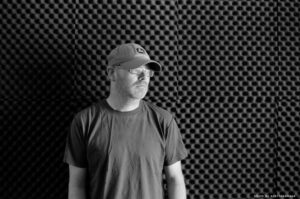
Mark Fell (UK)
Mark Fell’s musical work focuses on algorithmic and mathematical systems. The artist has
recently been influenced by non-Western music that explores a number of unknown timing and setting systems, audible in the piece presented at E-FEST, « Multistablity ».
Fabio Perletta (IT)
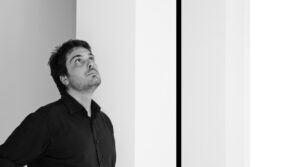
With INTERSTITIAL SPACES, Fabio Perletta offers us the follow-up to his 2013 album Field: Atom(s) Entropy. This new work investigates the physical phenomenon of « interstitial space », which is the point in a crystal lattice where the perfection of atomic structure is broken or suspended, resulting in open spaces for unexpected resonances.
Sébastien Roux (FR)
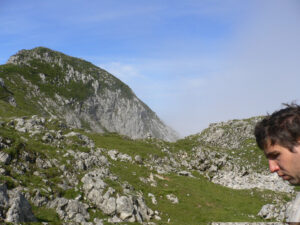
Sébastien Roux imagines listening situations using algorithms, games, movement, spatialization and diagrams. His work takes a variety of forms: guided listening sessions with loudspeakers, concerts with projected graphic scores, sound installations and site-specific performances.
Hogo (FR)
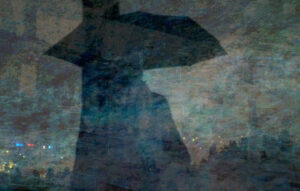
Nicolas Charbonnier’s work is based on a dual desire: to use the computer not as a practical tool but for its computing power, and paradoxically to achieve a highly organic aesthetic. The aim is to question the aesthetics usually associated with technology. He thus created his own compositional tool, a veritable network inspired as much by the Internet as by biological ecosystems (each element is interconnected, and the transformations of information and sound material are perpetual and unstable).
Saifeddine Helal (TU)
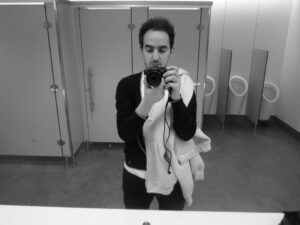
Saifeddine Helal is a young, self-taught Tunisian percussionist. From pop to world music, via jazz and electronic music, he has collaborated on various artistic projects with renowned artists such as Saber Rebai, Mohamed Ali Kammoun and Addictive TV.
Julien Beau (FR)
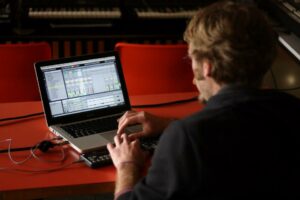
Composer, he lives in Paris and works in the fields of sound arts (music, video, installation, radio art), devoting himself mainly to acousmatic writing. With the Aposiopese and Tsuku Boshi labels, he takes part in publishing projects, live performances and collective improvisations in the broadest possible interdisciplinary context. His musical and audiovisual creations have been performed in concert in France and abroad with SCRIME, Musiques & Recherches and GRM.
Hamdi Makhlouf (TU)
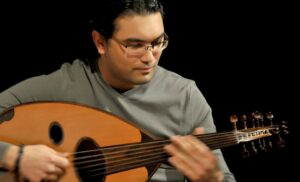
Hamdi Makhlouf’s music is part of a particular reflection on music.
fusional music. By this expression, we mean the fusion of several musical elements
from a range of different musical cultures, with a tendency to create
a modern stylistic style in its own right.
Méryll Ampe (FR)
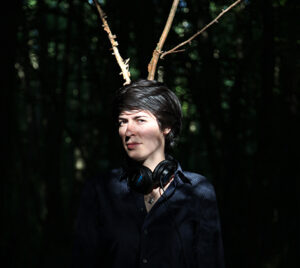
Méryll Ampe’s work is based on field recording, capturing sound elements for their acoustic and aesthetic qualities. She establishes links between her musical and visual practices, drawing on techniques directly related to sculpture: carving, modeling and chiseling.
AKM (FR)
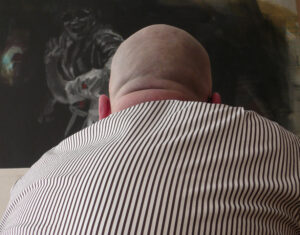
Akm’s music smells of sex, urban experimentation, samurai sauce and memories of schlagermusik. AKM is no newcomer. Producing for over twenty years on various labels, he clings to an uncompromising quest. Parallel universes collide, an experiment in sonic looping, the music goes haywire in the accidents of a rhythmic panic to ricochet off a swampy surface smelling of oil.
Mokuhen (FR)
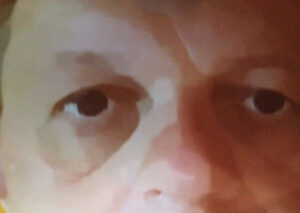
Composer and producer, Mokuhen weaves abstract and narrative sounds, blending acoustic, electronic and instrumental sources with field recordings. A music of contrasts, constantly shifting from intense tension to gentle calm, made up of accelerations and slowdowns, borrowing equally from « learned », electronic and cinematographic music, as well as from micro-noise. With a constant concern for placement and detail across a wide frequency spectrum.
Florent Caron-Darras (FR/JP)
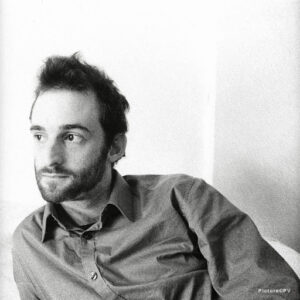
Florent Caron-Darras began his musical training at the Conservatoire d’Angers and the Ecole Maîtrisienne des Pays de Loire, then pursued a Master’s degree in contemporary Japanese music at the Sorbonne before entering the musicology program at the Conservatoire de Paris (CNSMDP) in 2009.
Gervasoni’s composition class. In addition to his instrumental writing, he is learning about new applied technologies.
and improvisation on Persian and Middle Eastern percussion.
Florent Caron-Darras has been teaching acoustics at the Université Catholique de l’Ouest since 2012.
Skander Besbes (TU)
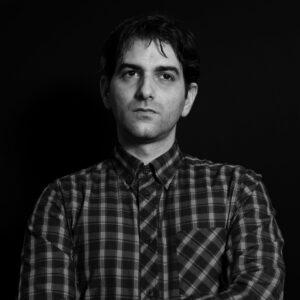
Skander Besbes aka SKNDR, eclectic musician and creative sound designer, has been busy for nearly
twenty years in the service of music in Tunisia.
Alongside his dancefloor activities, he explores generative compositional processes, which he uses to create immersive devices. Witness his collaborations with artist Haythem Zakaria on NUN and RAQS, inspired by Sufi mysticism. But also Syndroms, a quadraphonic performance at the Baron d’Erlanger’s house in 2011. In these contexts, SKNDR attempts to tell stories and provoke the listener’s emotions by
space for interpretation and appropriation.